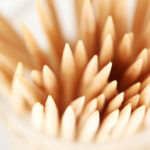Dental trauma refers to injuries sustained by the teeth, gums, and supporting tissues. Such injuries can be quite painful and potentially costly to treat. The nature and frequency of these injuries vary between adults and children due to differences in their physical activities, risk exposures, and the developmental stages of their teeth.
Common Dental Trauma in Children
Avulsion (Tooth Knockout): This happens when a tooth is completely knocked out of its socket. This is more common in children because the bone of their tooth sockets is less dense and the connective tissue between the tooth and bone is more elastic.
Luxation: This is the displacement of the tooth. A tooth might be pushed sideways, forwards, backwards, or deeper into its socket.
Fractured or Chipped Crown: This can be a minor chip off the enamel or a more severe fracture involving the dentin (layer underneath the enamel) or pulp (the tissue within the center of the tooth).
Injuries to the Developing Permanent Teeth: Trauma to the primary teeth (also called baby teeth) can sometimes affect the developing permanent teeth underneath.
Common Dental Trauma in Adults
Fractured or Chipped Crown: Adults are more likely to have fractures or chips, particularly if they have fillings or previous dental work, which might weaken the tooth structure.
Root Fractures: These are vertical or horizontal fractures of the tooth root. They are more common in adults due to the fully developed roots and denser bone of their tooth sockets.
Periodontal Ligament Injuries: This can lead to loosening of the tooth or damage to the tissues supporting the tooth.
Avulsion: Though less common than in children, adults can also experience complete tooth knockouts.
How Can You Prevent Dental Trauma?
Here are some helpful tips to prevent dental trauma:
- Mouthguards: For those involved in contact sports or activities with a risk of face injury, wearing a custom-fitted mouthguard helps to protect against dental trauma.
- Helmets: Wearing a helmet in activities like cycling, skiing, snowboarding, skateboarding, or rollerblading can prevent injuries not only to the head, but also to the face and mouth. Wearing a full-face protective helmet when motorcycling prevents dental and facial trauma.
- Child-Proofing the Home: For toddlers who are learning to walk, it’s essential to pad sharp corners and ensure there aren’t slippery areas to reduce the risk of falls and subsequent dental injuries.
- Avoid Using Teeth as Tools: Avoid using your teeth to open bottles, tear packets, or bite on hard objects.
- Regular Dental Check-ups: Weak or decayed teeth are more prone to fractures. Regular check-ups can help identify and treat potential problems before they lead to trauma.
- Healthy Diet: A diet rich in calcium and phosphorus can help strengthen teeth.
- Education and Supervision: Teach children about the dangers associated with certain activities, like rough play, and supervise them during risky activities.
- Seat Belts and Child Safety Seats: Use them every time when driving to reduce the risk of injury during car accidents.
- Fluoride: Using fluoride in toothpaste and mouthwashes leads to stronger enamel.
- Avoid Oral Jewelry: Tongue, cheek, and lip piercings often lead to chipped or cracked teeth.
We Are Here to Help in Case of Dental Trauma
In case of any dental trauma, it’s crucial to see a dentist as soon as possible. Immediate action, particularly in cases like avulsion, can make a difference in saving the tooth. The dental team at Placerville Dental Group is always here to answer any questions you may have about dental trauma and to help you retain your dental health in case of an injury.



0 Comments